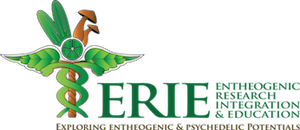Integration Guidelines for Entheogenic Experiences
Our intention is to empower individuals who engage in entheogenic experiences through education, in order to minimize risks and optimize the integration process. These guidelines support the integration process through consideration of factors before, during, and after the experience. In addition, working with a qualified guide/sitter that you trust and are familiar with is encouraged to enhance safety.
1.) Before: How to prepare
Set, Setting, & Safety:
- Clarify your intention for the experience.
- Make sure that your mindset and intention are aligned with the offered setting, and that conditions for safety and emotional support are appropriate.
- Consider these questions:
- Are you comfortable with the other participants, if any?
- Do you know what the training of the guide/sitter is?
- What is the cosmological container being held?
- Are you aware of required preparation and integration guidelines?
- Have you been conscientious about following them?
- Listen to your intuition: some anxiousness prior to an experience is normal, yet do not force yourself into experiences you are uncertain or hesitant about.
- Acknowledge and honor any needs to postpone or cancel.
Evaluate possible outcomes & risks:
- Know the entheogen you will be working with
- Ensure that its quality and source are reliable.
- Know the dosage range, duration of action, normal effects, adverse reactions, and contraindications (Erowid, DanceSafe, TripSit).
- Know its medical, psychoemotional, phenomenological, & legal risks.
- Discuss concerns with your guide, and review any health conditions/medications/supplements with a healthcare provider.
Evaluate level of preparedness:
- Enter all experiences rested, hydrated, and well nourished. Follow any entheogen specific dietary restrictions.
- Organize transportation to and from journey location as needed.
- Limit strenuous emotional/physical/social activity, and plan to be in low stimulation environments (ideally with access to nature), for 1-2 days before and after.
- Make a list of available friends, peers, mentors, and/or a therapist with whom you can discuss the experience after.
- Focus on preparation for and integration of the upcoming experience through practices such as journaling, creative expression, meditation, exercise, bodywork, time in nature, etc.
- Avoid sexual contact with yourself and others 1-3 days before, during, and after, especially with individuals you have not had prior intimate relations with.
2.) During: How to meet the experience
- Align with your intention and your source of higher inspiration before starting.
- Embrace the material that comes to your awareness in lieu of fighting it.
- Reconnect with your breath and intention if scared or overwhelmed.
- External stimuli may be a source of distraction or projection. When possible, focus on the material the journey is bringing up for you and direct the inquiry inward.
- Avoid acting out on any aggressive or sexual energy towards yourself, others, or the space.
3.) After: How to support your integration process
Optimize your integration potential
- Rest, hydrate, and nourish yourself!
- Allow time and space for contemplation of your experience so that it continues to unfold and metabolize.
- Emphasize nonverbal and/or artistic verbal means to express your experience. Over-sharing your experience, or trying to make rational sense of it too early, may hinder its full impact.
- Wait a few weeks before making any major life changes or decisions.
- Develop regular integration practices.
Guidelines to develop integration practices
The first days after the experience are a pivotal time to start incorporating new insights into your daily life by engaging in regular practices. During this time you are most physically/mentally/emotionally/spiritually open to bring new insights into daily practice.
- Review your experience with regards to your original intention—identify patterns, themes, and inner states of awareness.
- Based on your review, identify what aspects of your experience seem necessary to incorporate into your life, and reflect on what immediate, short-term, and long-term practices may support this process.
- Make sure your chosen practice(s) are sustainable to ensure consistency and compliance.
- A regular spiritual practice often provides a larger container for your integration work.
- Reevaluate your integration practices: As time unfolds, adjust your practices to incorporate new insights, and acknowledge any emotional states that may have arisen during them.
- A mentor, integration assistant, and/or therapist are useful resources in developing and sustaining integration practices.
Seek professional assistance if you experience any of the following symptoms:
- Sleep disturbance for multiple consecutive days after an experience.
- Paranoid or delusional thoughts occurring beyond the normal duration of an experience.
- Thoughts of harming yourself or others.
- Manic behavior, depression, or intense meaninglessness.
Our Approach to Integration:
Due to the inadequacies of the Western reductionist paradigm in addressing the extraordinary transpersonal nature of entheogenic experiences, we take an educational approach to integration. Mezirow’s (1997) description of transformative learning offers an illustration of this model:
- “Education that fosters critically reflective thought, imaginative problem posing, and discourse is learner-centered, participatory, and interactive, and it involves group deliberation and group problem solving
- Effective discourse depends on how well the educator can create a situation in which those participating have full information; are free from coercion; have equal opportunity to assume the various roles of discourse (to advance beliefs, challenge, defend, explain, assess evidence, and judge arguments); become critically reflective of assumptions; are empathic and open to other perspectives; are willing to listen and to search for common ground or a synthesis of different points of view; and can make a tentative best judgment to guide action. These ideal conditions of discourse are also ideal conditions of adult learning and of education…
- In fostering self-direction, the emphasis is on creating an environment in which learners become increasingly adept at learning from each other and at helping each other learn in problem-solving groups. The educator functions as a facilitator and provocateur rather than as an authority on subject matter” (pp. 10-11).
